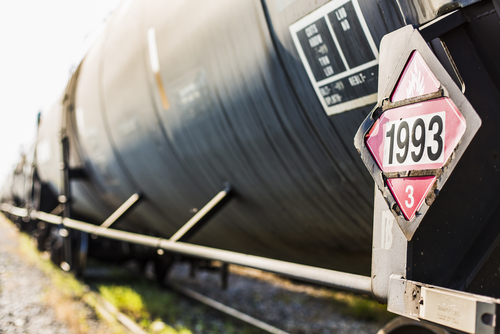
Under a newly finalized rule, the Department of Transportation’s (DOT) Pipeline and Hazardous Materials Safety Administration (PHMSA) will now require railroads to proactively provide first responders with real-time details of hazmat shipments involved in incidents.
“We heard first-hand from firefighters that were responding to the Norfolk Southern derailment in East Palestine that they and other first responders need hazardous materials train consists as soon as an incident occurs,” PHMSA Deputy Administrator Tristan Brown said. “This information will ensure the heroes that are responding to an incident can prepare for what they will encounter instead of waiting until after they get on scene to try to access this vital information.”
Those details would go to the primary Public Safety Answering Point (such as 9-1-1) as soon as the railroad was made aware of an accident or incident involving hazardous materials on its line. All railroads would need to create hard copy and electronic versions of real-time train information for shipments containing hazardous materials, including the quantity and position of the hazardous materials on a train, the train’s origin and destination, emergency response information, and a designated emergency point of contact at the railroad.
“Requiring railroads to provide first responders the real-time information they need about hazardous materials moving through their communities is another example of DOT using the full range of its authorities to make freight rail safer for people working on, living near, and traveling along railroad tracks,” Federal Railroad Administration Administrator Amit Bose said. “When Norfolk Southern’s East Palestine derailment occurred last February, FRA and PHMSA personnel were on the ground within hours to support the investigation and the community, and this rule, combined with several FRA rules and actions, is a clear sign that our support continues today, as does our pursuit of higher safety standards.”
Firefighters will be able to use PHMSA’s 2024 Emergency Response Guidebook without issue as a result, as a guideline for how to respond to each type of hazmat incident. This followed more than $2 billion the Department of Transportation (DOT) has provided since the passage of the Bipartisan Infrastructure Law in 2021 for rail safety infrastructure investments, and issued other final rules that, among others:
- Created minimum safety requirements for the size of train crews
- Required railroads to provide emergency escape breathing apparatuses to train crews
- Mandated that large freight and passenger railroads systematically identify and evaluate fatigue-related hazards on their system and mitigate them